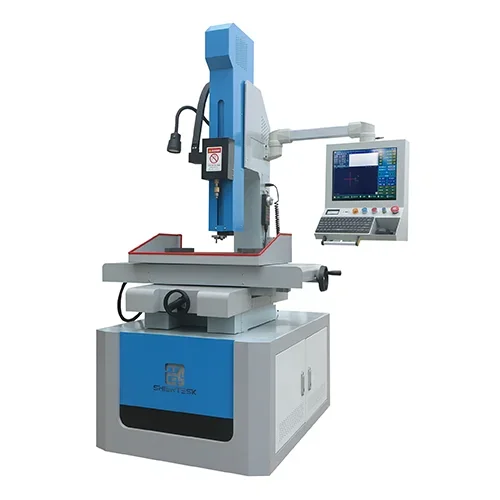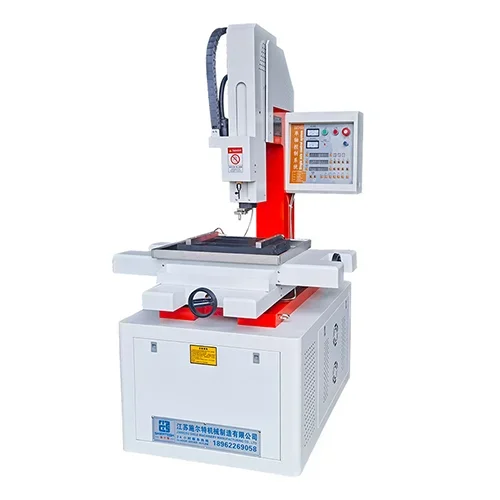In the field of metalworking, the electric spark punching machine plays a crucial role in various applications. This advanced technology has revolutionized the way metal components are fabricated, offering precision, efficiency, and versatility. In this article, we will explore the definition, working principle, components, functionality, types, applications, and advantages of electric spark punching machines.
Understanding the Electric Spark Punching Machine
Definition and Working Principle
The electric spark punching machine, also known as an electrical discharge machine (EDM), is a specialized tool used to shape and form metal components with high precision. It utilizes electrical discharges, or sparks, to erode the material and create intricate shapes and patterns. The process involves the generation of controlled electrical pulses between an electrode and the workpiece, resulting in the removal of material through a series of repeated discharges.
Components and Functionality
An electric spark punching machine consists of several key components that work together to achieve precise metalworking. These include:
Power Supply: The power supply provides the necessary electrical energy to generate the sparks. It converts the input voltage into high-frequency pulses that are delivered to the electrode.
Electrode: The electrode is a conductive tool that comes into contact with the workpiece. It is typically made of copper or graphite and is responsible for delivering the electrical discharges to erode the material.
Dielectric Fluid: The dielectric fluid acts as a medium for the electrical discharges. It helps to cool the electrode and workpiece, flush away eroded material, and prevent the formation of sparks.
Control System: The control system regulates the electrical pulses, controlling factors such as pulse duration, frequency, and intensity. It ensures precise and consistent machining operations.

Types of Electric Spark Punching Machines
There are two main types of electric spark punching machines:
Ram EDM: This type of machine utilizes a vertically moving electrode, known as a ram, to erode the material. It is suitable for machining deep cavities and complex shapes.
Wire EDM: In wire EDM, a thin, electrically conductive wire is used as the electrode. It is guided along a programmed path to cut the workpiece. Wire EDM is ideal for creating intricate and delicate shapes.
Applications of Electric Spark Punching Machines
Electric spark punching machines find applications in various industries, including:
Mold Making: The high precision and intricate capabilities of electric spark punching machines make them indispensable in mold making. They can create complex shapes and patterns required for producing molds used in plastic injection molding, die casting, and other manufacturing processes.
Aerospace Industry: Electric spark punching machines are extensively used in the aerospace industry for manufacturing turbine blades, engine components, and other critical parts. The ability to achieve tight tolerances and intricate geometries is crucial in this field.
Medical Device Manufacturing: The medical device industry relies on electric spark punching machines to produce precision components for surgical instruments, implants, and other medical devices. The machines can create intricate features required for these applications.
Automotive Industry: Electric spark punching machines play a vital role in the automotive industry, where they are used for manufacturing engine components, gears, and other critical parts. The machines offer high precision and repeatability, ensuring the quality and performance of the final products.

Advantages of Electric Spark Punching Machines
Electric spark punching machines offer several advantages over traditional machining methods:
High Precision: The ability to achieve tight tolerances and intricate shapes makes electric spark punching machines ideal for applications that require precision.
Versatility: Electric spark punching machines can work with a wide range of materials, including hardened steels, exotic alloys, and conductive ceramics. This versatility allows for the production of diverse components.
Efficiency: The non-contact nature of the process reduces tool wear, resulting in longer tool life and reduced downtime for tool changes. Additionally, the ability to machine complex shapes in a single operation improves overall efficiency.
Cost-Effectiveness: Despite the initial investment, electric spark punching machines can be cost-effective in the long run. The reduced need for secondary operations, such as grinding or polishing, and the elimination of expensive tooling make them a viable option for many manufacturers.

Conclusion
The electric spark punching machine has revolutionized the metalworking industry, offering precision, efficiency, and versatility. Its ability to create intricate shapes and patterns with high accuracy has made it indispensable in various industries, including mold making, aerospace, medical device manufacturing, and automotive. With its numerous advantages over traditional machining methods, the electric spark punching machine continues to play a vital role in shaping the future of metalworking.
Exploring the Efficiency and Precision of Electric Spark Punching Machines
